Technology
Colab Platforms Has Fixed May 21 As Record Date For 1:2 Stock Split
PNN Mumbai (Maharashtra) [India], May 7: Board of Directors of Colab Platforms Limited (BSE: 542866), an emerging leader in the country’s sports-tech space have considered and fixed Wednesday, 21st May 2025 as a Record Date for ascertaining eligibility of shareholders for 1:2 stock split (sub-division of equity shares) of the company from 1 equity share […]
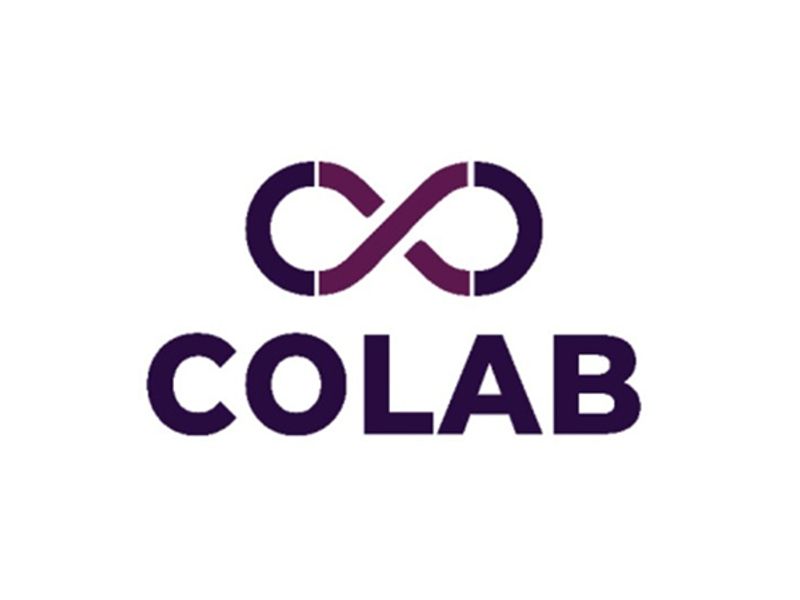
PNN
Mumbai (Maharashtra) [India], May 7: Board of Directors of Colab Platforms Limited (BSE: 542866), an emerging leader in the country’s sports-tech space have considered and fixed Wednesday, 21st May 2025 as a Record Date for ascertaining eligibility of shareholders for 1:2 stock split (sub-division of equity shares) of the company from 1 equity share having face value of Rs. 2 each into 2 equity shares having face value of Rs. 1 each.
In a strategic move poised to reshape India’s sports-technology landscape, company has announced the launch of a Rs. 250 million Sports-Tech Growth Accelerator Programme. The initiative aims to identify, support, and scale early-stage ventures across critical areas of sports innovation, ranging from athlete performance tools and esports infrastructure to gamified fitness and fan engagement platforms.
Positioned under Colab’s newly established Sports Innovation Division, the Accelerator is designed to serve as a launchpad for founders reimagining the future of sports–from performance tech and esports to fan engagement, athlete development, and gamified fitness.
“India’s sports sector is on the cusp of a digital leap, and with this Growth Accelerator, we are not just funding ideas but building an innovation engine for India’s sports future. We want to back visionaries who are building for the next generation of sports, both in India and for the world,” said Puneet Singh, Managing Director of Colab Platforms Limited.
Highlights:-
* Company launches Rs. 250 million accelerator programme to drive sports-tech innovation in India
* An initiative to empower startups, strengthen collaborations, and transform the future of sports through technology
* Company also unveils new subsidiary, announces interim dividend, and forays into predictive gaming market
Access to a robust sports ecosystem
The programme will be spearheaded by Colab’s newly launched Sports Innovation Division and is set to offer not just capital, but a robust ecosystem to startups. It will include access to cutting-edge R&D infrastructure, mentorship from top industry operators and domain experts, business advisory and go-to-market strategy, and connections to sports federations, organisations, universities, and private equity firms. The selected startups will also gain opportunities to pilot their solutions within Colab’s own ecosystem, which includes sports leagues, teams, events, and commerce platforms.
The Colab Sports-Tech Accelerator programme will actively scout, support, and scale startups working across multiple impact-driven verticals, including, AI-Driven tools & Performance analytics, Wearable Sports Tech, Fan Engagement & Skill Based gaming platforms, Esports Infrastructure & Content IPs, Grassroots & Decentralised Athlete development, Gamified Fitness and Digital coaching models, and Sports 360° Platforms & Communities.
Unveils subsidiary for sports nutrition, equipment segment
In line with its broader growth strategy, Colab Platforms has incorporated a new wholly-owned subsidiary, Colab Sports Science Private Limited, which will drive the Group’s expansion in the sports nutrition and equipment segment. Colab Sports Science will cater to the fast-growing demand for sports science-based products and services in India. It will operate across both online and offline channels, offering nutritional supplements, wearable gadgets, and other sport-specific technologies that align with Colab’s vision to build a 360-degree sports ecosystem.
Board declares interim dividend
The Board of Directors of Colab Platforms has declared an interim dividend at the rate of 0.5% per share of face value of Rs. 2 each for the financial year 2025-26. The record date has been fixed as April 24, 2025. The dividend shall be paid on or before May 16, 2025, to the eligible shareholders.
Colab enters predictive gaming sector
As part of its broader digital expansion, Colab Platforms has formally entered the predictive gaming space, a rapidly emerging sector with over 50 million users and annual transaction volumes exceeding Rs. 50,000 crores. The company has also launched www.colabsports.in, an e-commerce platform for sports.
Through its new predictive gaming initiative, Colab aims to build a scalable, transaction-fee-based platform that offers users interactive and educational experiences, underpinned by advanced analytics, real-time data, and strong regulatory compliance.
These strategic expansions showcase the company’s unwavering commitment to innovation and its drive to provide cutting-edge experiences for its users. The foray is expected to diversify Colab Platforms’ revenue streams and also strengthen its position in the evolving sports-tech and fintech convergence space.
About Colab Platforms Ltd.
Colab Platforms Limited is listed on the Bombay Stock Exchange. The company has been delivering innovative technological solutions across various sectors, leveraging its expertise in advanced technologies to drive growth and enhance user experiences. Colab Platforms Limited is dedicated to providing customised, technology-based processing solutions that help clients achieve their objectives and exceed expectations. Recognising India’s rapid emergence as a global technology hub, Colab Platforms harnesses the nation’s diverse and talented professionals to contribute significantly to the development of the professional community.
(ADVERTORIAL DISCLAIMER: The above press release has been provided by PNN. ANI will not be responsible in any way for the content of the same)
(The story has come from a syndicated feed and has not been edited by the Tribune Staff.)
Technology
Dream Sports To Invest $50 Mn In Cricbuzz & Willow TV
SUMMARY As a part of this investment, Dream Sports will also pick up a minority stake to deepen its play in the cricket content and broadcast ecosystem The move aims to deliver interactive and AI-powered fan experiences globally, while also exploring product-level integrations across live stats, personalised content, commerce experiences, and interactive match streams Earlier […]

As a part of this investment, Dream Sports will also pick up a minority stake to deepen its play in the cricket content and broadcast ecosystem
The move aims to deliver interactive and AI-powered fan experiences globally, while also exploring product-level integrations across live stats, personalised content, commerce experiences, and interactive match streams
Earlier in March, the company shifted its domicile from the US to India via a reverse merger, using Indian government’s fast-track route for cross-border mergers
Dream Sports, the parent entity of fantasy gaming platform Dream11
On the back of this investment, Dream Sports will also pick up a minority stake to deepen its play in the cricket content and broadcast ecosystem.
The move aims to deliver interactive and AI-powered fan experiences globally, while also exploring product-level integrations across live stats, personalised content, commerce experiences, and interactive match streams.
Cricbuzz is a cricket news and information website, claiming to have over 185 Mn monthly users. Willow TV, on the other hand, is a cricket broadcaster that streams over 1,500 matches annually across the US, Canada, and expanding markets such as the Middle East and Southeast Asia.
Dream Sports’s cofounder and CEO Harsh Jain said, “With this investment, all cricket fans can expect much more fan engagement, interactive streams, and integrated commerce experiences that will bring them closer to the action and to each other.”
Avendus Capital acted as the exclusive financial advisor for the deal.
This move comes as Dream Sports continues to expand its global footprint. Last week, the company joined the ownership group of English football club Salford City FC, part of a consortium led by football legends David Beckham and Gary Neville, along with business leaders Declan Kelly and Lord Mervyn Davies.
Besides Dream11, Dream Sports also operates FanCode, a digital sports content and commerce platform, and DreamSetGo, which offers curated sports travel experiences.
Dream Sports’ India Gameplay
Earlier in March, the company shifted its domicile from the US to India via a reverse merger, becoming one of the first new-age firms to utilise the Indian government’s fast-track route for cross-border mergers.
This “reverse flipping” trend aligns with a broader movement among Indian startups such as PhonePe, Groww, Zepto, Flipkart, and Razorpay, which are relocating their domiciles to India in eyeing public listings. However, in its explanatory statement filed with the MCA for this domicile shift, Dream Play didn’t disclose any plans for a public listing yet.
Back in 2021, reports suggested that Dream Sports was eyeing a $1.5 Bn US IPO by 2022, a plan that ultimately did not materialise.
More recently, another real money gaming startup, Zupee’s cofounder, told Inc42 that despite the ongoing startup IPO boom, it is unlikely that a gaming company would go for a public listing before there is clarity on regulations.
The company continues to capitalise on the IPL season. This year, it has launched a celebrity campaign featuring actors Aamir Khan and Ranbir Kapoor, along with top cricketers like Rohit Sharma, Hardik Pandya, KL Rahul, Jasprit Bumrah, Suryakumar Yadav, Rishabh Pant, and R Ashwin.
During IPL 2024, Dream Sports added 1.1 Mn users on the very first day and recorded 15 Mn concurrent users, cofounder Harsh Jain said on X.
Founded in 2008 by Jain and Bhavit Sheth, Dream Sports’s Dream11 is a real-money gaming (RMG) platform that enables users to create virtual teams based on real players and win cash prizes based on their on-field performance.
However, like many RMG platforms, Dream11 have been impacted by the imposition of 28% GST on the full bet value. In October 2023, the DGGI issued the company a GST notice worth INR 28,000 Cr, with total claims reportedly touching INR 40,000 Cr.
More recently, the government reiterated to the Supreme Court that any online game with monetary stakes, regardless of whether it’s a game of skill or chance, should be taxed as gambling under the GST regime at a 28% rate.
While its FY24 numbers are yet to be disclosed, Dream Sports reported a 32% rise in net profit in FY23 to INR 187.8 Cr, with operating revenue climbing 66% to INR 6,384.5 Cr.
Technology
The Suunto Run is built for the Strava generation
When you buy through links on our articles, Future and its syndication partners may earn a commission. Credit: Suunto Running has changed, and Suunto knows it. Once seen as the preserve of club athletes and endurance obsessives, running today is as much about connection, self-expression, and community as it is about competition. Suunto’s new Run […]
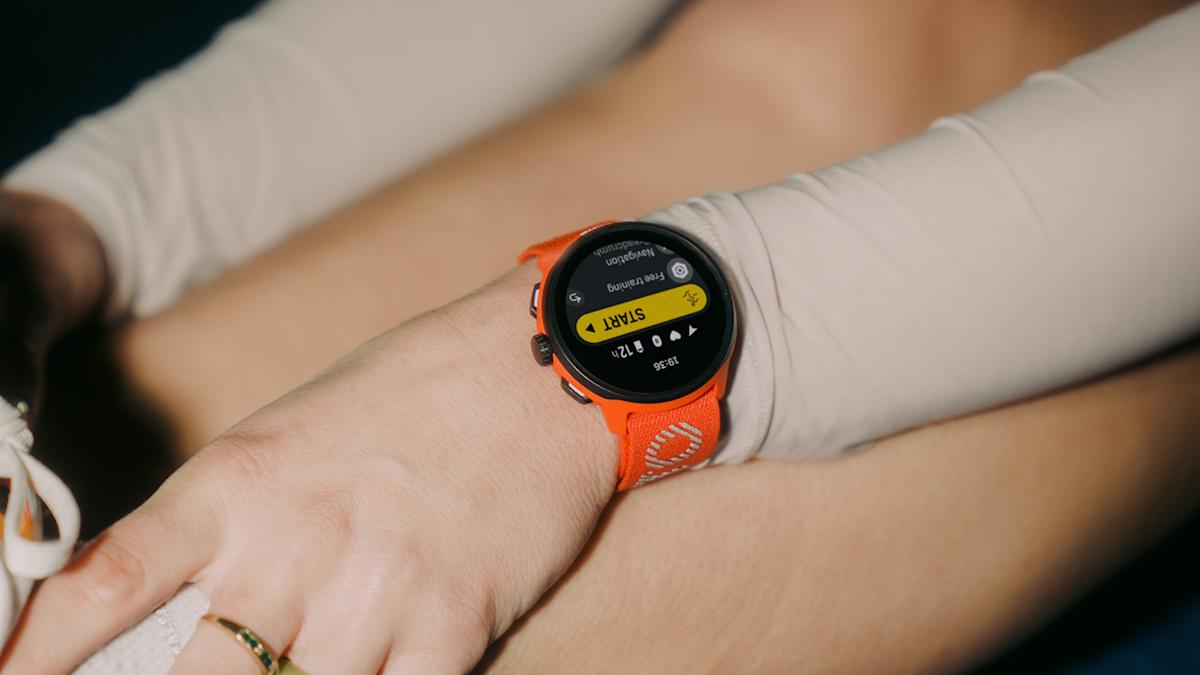
When you buy through links on our articles, Future and its syndication partners may earn a commission.

Credit: Suunto
Running has changed, and Suunto knows it. Once seen as the preserve of club athletes and endurance obsessives, running today is as much about connection, self-expression, and community as it is about competition.
Suunto’s new Run watch is made for this moment: light, simple, smart, and built with the Strava generation in mind.
The new running watch strips things back to what runners actually use, while still packing in smart tools to elevate every run.
It ditches ultra-adventurer frills like offline maps and instead focuses on what matters when you lace up: pace, motivation, recovery, and freedom from your phone.
At just 36 grams, it’s Suunto’s lightest watch yet. Add a 1.32″ AMOLED screen and a refreshed UI, and you get a performance wearable that’s friendly to new runners and satisfying to seasoned racers.

Credit: Suunto
Add built-in music storage, 20-hour dual-band GPS tracking, and full Bluetooth workout headphone compatibility, and you’ve got a device that genuinely lets you leave your phone at home.
“Today, the internet, data sharing, and wearable sports technology enable new forms of community, connection, competition, and self-knowledge,” says social scientist Dr. Neil Baxter, who consulted on the project. “Running has become an enriched part of modern culture.”
Built to motivate, not just measure
That enrichment is reflected in the data, too. The Suunto app provides post-run analysis and recovery guidance and syncs to over 300 third-party platforms, including Strava, TrainingPeaks, and Komoot.
The Run also provides Training Load and heart rate recovery stats, as well as a suite of recovery tools to help you train smarter, not harder.
Suunto Run also supports 34 sports beyond running (from strength to cycling to yoga), but make no mistake: this is a runner’s watch.
The brand added a track mode, which we’ve seen cropping up in running-forward wearables more and more in recent years.
In a world of do-everything multisport monsters, the Suunto Run is refreshingly specific. It’s not trying to climb Everest. It just wants to help you crush your next 5K, beat your best time on that hill segment, or keep your run streak alive.
The Suunto Run sells for a meagre £199 in the UK and €249 in Europe – US and AU prices TBC. It will be available to buy in the EMEA region from 3 June 2025.
For more info, head over to Suunto.
Technology
NFL will measure first downs with Hawk-Eye with after Sony’s tech agreement
The NFL will use Hawk-Eye technology to measure the first downs in a game, replacing the chain measurements that have become slightly outdated considering the available tech nowadays. The Hawk-Eye tech will be provided by Sony. Sony have partnered with just about every major sport in the world to innovate by using their advanced technology […]
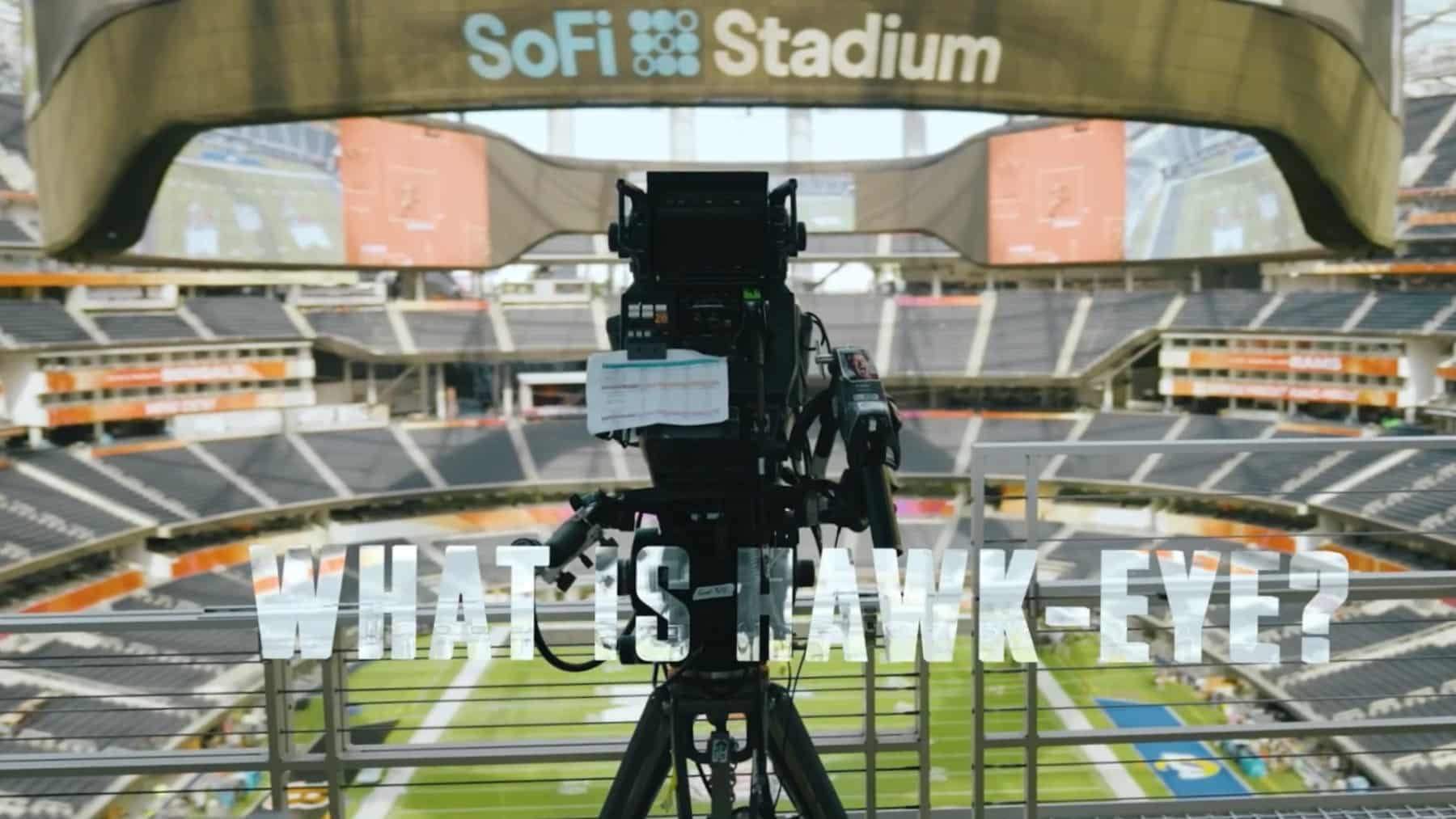
The NFL will use Hawk-Eye technology to measure the first downs in a game, replacing the chain measurements that have become slightly outdated considering the available tech nowadays. The Hawk-Eye tech will be provided by Sony. Sony have partnered with just about every major sport in the world to innovate by using their advanced technology in real time to assist the officiating. The NFL has an established relationship with Sony since 2021 when they adopted the SMART system to combine video feeds from all of the NFL’s broadcast partners in one place. Now they have taken it a step further.
What kind of changes will the NFL implement for the future of the sport?
The NFL is evolving. To everyone’s benefit, the league has considered the ever changing reality of modern day life. The pace and innovations happening in the tech sector daily is unlike anything in history. Sony has been on the forefront of that innovation for generations now. One aspect of their business model that has served the sporting world well is their cameras.
When we consider the range of products that Sony are leading the markets with, we can understand the dominance they have in the sporting world. Sony started producing cameras in the 80’s and since then they have established themselves as a serious competitor in the camera arena. The NFL have been using their cameras in the SMART(Synchronized Multi-Angle Replay Technology) since 2021.
Sony’s incredible 8k cameras have enabled them to dominate the sport sector as they have partnerships with with 23 of the top 25 global sports leagues. Their cameras are used in soccer, tennis Grand Slams, cricket major tournaments and the Rugby World Cup. The sporting world has taken advantage of the advancements in camera technology to assist with the officiating process.
How will the NFL use Sony’s camera’s to assist the officials?
The change comes in the measuring of the first downs. The chain crew have become an icon of the game of football. The tension when the chain crew runs onto the field to measure would have millions of fans on the edge of their seats. That process will now be handled by the new Sony system specifically designed to measure the distance between the ball and first down.
The chain crew will remain on the field in a secondary capacity while the officials make use of the new Sony system being controlled from the NFL’s Art McNally GameDay Central Officiating Center (AMGC) in New York. So the adoption is a seamless and smooth transition that will benefit the sport tremendously. As with other sports, the game of football is taking full advantage of the tech available to them.
After this years annual draft and the drama that it inevitably brings, the NFL and its fans are ready to start the new season. And this year will be the first season to use the new Sony system after conclusive testing took place last year to confirm the technology’s viability. Those tests were obviously successful as the league claims measurements could be up to 60% faster this year.
What will the 2025 season have in store for the NFL and its fans across the world?
The discussion topic right now in the halls of the NFL is all the rookies and their potential. The NFL is evolving along with modern day society. The international expansion has brought a legion of fans into the sport. The standard of officiating in international sport has been improving with the use of these types of systems. Improving fairness and encouraging engagement from the fans. Long gone are the days when fans would debate over a call that changed the outcome of a game due to a mistake on the part of the officials.
Technology
Real-life companies pump up promotions around fictional team in new ‘F1′ movie
The real-life companies that will be sponsors in the fictional F1 movie are preparing for what they hope will be a boon for their businesses as the premiere of the forthcoming film draws closer. The movie, simply called “F1,” will hit theaters internationally June 25 and in North America on June 27. Since the plot […]
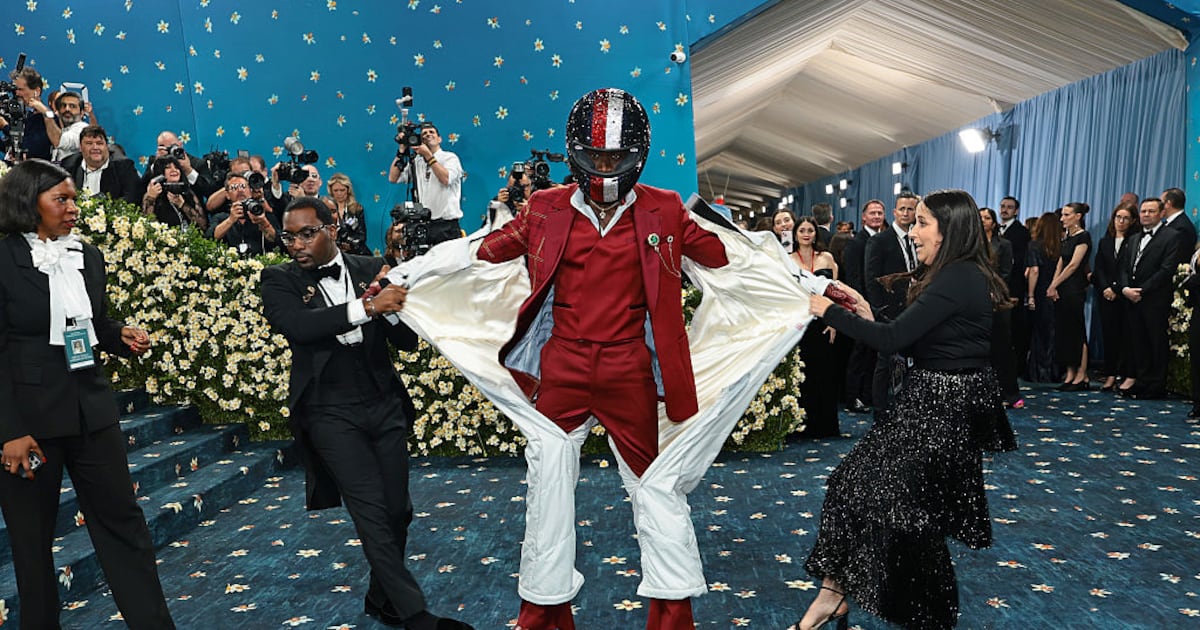
The real-life companies that will be sponsors in the fictional F1 movie are preparing for what they hope will be a boon for their businesses as the premiere of the forthcoming film draws closer. The movie, simply called “F1,” will hit theaters internationally June 25 and in North America on June 27. Since the plot revolves around an F1 team, Apple Original Films worked to land real companies that would provide their brand to the film as sponsors of the fictional team to give it an extra bit of authenticity. Sponsors of the fictional APX (pronounced Apex) GP team include Mercedes-Benz, EA Sports, Expensify, SharkNinja, Geico, IWC and Tommy Hilfiger. Expensify, the expense tracking software company, called out the sponsorship during its Q1 earnings report last week as “possibly one of the best brand placement opportunities ever.” Sign-ups to Expensify quadrupled for a few hours last week after actor Damson Idris wore a firesuit, with Expensify’s logo prominently featured, to the Met Gala as part of a stunt with Tommy Hilfiger, according to CEO David Barrett. Barrett added in a note to investors that “this gives us incredible exposure on a global basis …. Accordingly, we are battening down the hatches in preparation for what we hope will be a wave of new leads that puts our servers, sales team, and customer success to the test.”
WAITING FOR IMPACT: S.F.-based Expensify said it has been making payments on the sponsorship “for a while,” but that it has yet to record them in earnings, so the cost remains unknown. The impact from the sponsorship will likely be felt in Q3 of this year. Expensify will record the expense the day the movie comes out, according to a transcript of what company executives said during the Q1 earnings call last week. In the movie, both road cars and the race cars driven are Mercedes, and the German carmaker also provided the safety car that is used in filming. To commemorate the movie, Mercedes announced during F1 Miami race weekend earlier this month that it will sell a limited-edition AMG GT63 APXGP Edition road car. The company is making only 52 of the 577-horsepower cars, which Car And Driver magazine expects to sell for more than $191,550, the starting price of a normal GT63. The car has gold accents to match the fictional team’s colors, and the floor mats are embroidered with the lettering “APXGP.” The center console has a badge that notes which of the 52 it is. On Mercedes-Benz USA’s website, the company has a special page for the car, along with a link to buy similarly modeled vehicles.
AS SEEN IN ‘F1′: For EA Sports, it is naturally using the movie to promote the next edition of its officially licensed F1 video game. The company says fans who pre-ordered the “F1 25” game’s “Iconic Edition” by a certain period will get access to special gameplay chapters inspired around the movie. Meanwhile, Tommy Hilfiger’s stunt with Idris at the Met Gala drew attention to the film and went viral on social media, with the company saying it was a “moment that fused high fashion with cinematic glamour.” Along with the APXGP firesuit, Idris walked the red carpet with a specialized racing helmet featuring 20,0000 Swarovski crystals attached in red, white and blue colors. Elsewhere, IWC, the longtime Mercedes AMG Petronas F1 Team sponsor, will have its watches worn by Brad Pitt and others in the film. It has released a couple timepieces around the movie including a $7,000 Pilot’s Watch Chronograph APXGP that has gold accents. IWC brought one of the cars used in filming to the Goodwood classic car show in the U.K. and Idris showed up alongside actress Kerry Condon to discuss their roles in the movie. Finally, F1 was selling APXGP merchandise at the F1 Miami race weekend in early May.
Technology
University of Florida looks at how coaches use data to help players
Dave Schlenker | University of Florida See the moment courtside in the Alamodome that Florida basketball won the national title The Gators defeated Houston 65-63 Monday night at the Alamodome in San Antonio to win the program’s third national championship. Two University of Florida engineering graduate students presented research at a conference in Japan on […]

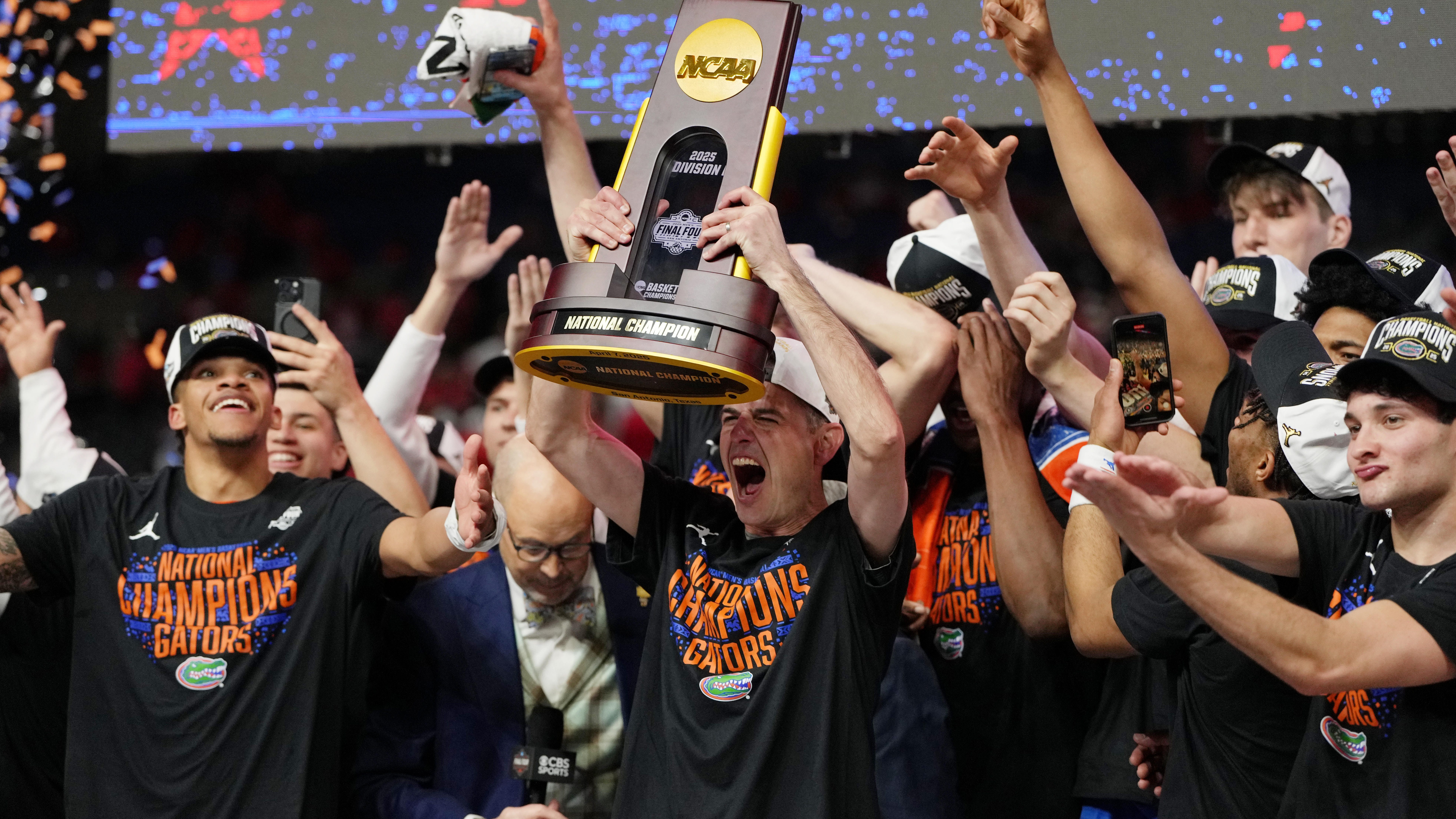
See the moment courtside in the Alamodome that Florida basketball won the national title
The Gators defeated Houston 65-63 Monday night at the Alamodome in San Antonio to win the program’s third national championship.
- Two University of Florida engineering graduate students presented research at a conference in Japan on how coaches use data to improve athletic performance.
- The students’ research focused on how coaches in collegiate athletics utilize data from wearable sensors and other technology.
- The research found that coaches use data to make decisions about training, strategy, and injury prevention.
Shortly after the confetti settled over the University of Florida’s basketball championship in April, two graduate students studying artificial intelligence traveled to Japan to discuss how coaches are using data and technology to maximize player performance and safety.
Accomplished athletes themselves, UF engineering students Mollie Brewer and Kevin Childs are co-primary investigators on a paper exploring how coaches analyze data — often from wearable sensors — to shape training and strategy and, ultimately, win more games.
If a player comes off an intense workout, for example, coaches can look at the data and determine if that player needs rest before the next game. This means successful coaches — like those coaching the championship basketball team — are adding “data analyst” to their roles.
Brewer and Childs’ paper was selected for presentation at the renowned Association for Computing Machinery CHI conference in Yokohama, Japan, which ran April 26 to May 2. It was a big deal, not just because UF students are getting an international spotlight on their AI in athletics research but also because the pair’s very first research paper was chosen for a highly competitive world conference.
“This is a look into how coaches use technology within collegiate athletics,” Childs said. “We have a lot of studies talking to recreational athletes. We have some studies within the human computer-interaction area looking at professional sports. But we don’t really have an understanding of how technology is used in systems like collegiate athletics.”
Brewer added: “And we’re not going to lie, bringing it to a conference on the back of a national championship is even more exciting.” Brewer and Childs are Ph.D. engineering students and key players in the $2.5 million UF & Sport Collaborative initiative that, among other things, explores how AI data can maximize athletic performance and reduce injuries.
Known as the AI-Powered Athletics project, this partnership between the Herbert Wertheim College of Engineering and the University Athletic Association (UAA) delves deep into wearables such as fitness trackers and other sensors attached to athletes to provide information for AI databases.
“This paper was on the coach’s perspective of what types of technology and data are being used in collegiate athletics,” Brewer said. “We’re presenting how the landscape of data flows in this environment and also finding the opportunities to improve technology and data usage among these top-level coaches.”
The researchers worked with five teams and 17 coaches. For privacy, they were not able to reveal what teams participated.
But a March article on floridagators.com reported UF’s basketball team utilizes data for decisions on the court and in training. Heading into the SEC Tournament in March, for example, coaches used the data to increase intensity at practices to ensure optimum stamina if the team had to play three games in three days (which it did).
As data analysts, coaches are figuring out what the numbers mean for individual athletes, particularly the relationship between intensity and injury.“They’re intaking data from dozens of sources and processing this to figure out the optimal training plan,” Childs said. “For example, there are GPS IMUs — inertial measurement units — being worn by a lot of student athletes. They are little vests with sensors between the shoulder blades. It captures all their position data, how fast they jump, how fast they’re moving.”
Another conclusion: Coaching is not a one-person job in collegiate athletics.
“There’s an entire interdisciplinary team, and that information is shared among everybody to make decisions, and sometimes the same technology output is used by different roles,” Brewer said. “A dietician may use it one way. An athletic trainer may use the output for return to play, but they’re all communicating together.”
Brewer is a cyclist, and Childs was a competitive swimmer. They know the ins and outs of competition and results. This research sharpens the competitive edge, that “last-second buzzer beater — anything you can do to get that extra 1%,” Childs said.“We are so proud of Mollie and Kevin’s innovative thinking and hard work,” said Kristy Boyer, a professor in UF’s Department of Computer & Information Science and Engineering, and one of collaborators on the paper. “This project exemplifies what can happen when university faculty and innovators within the athletic association come together with a common goal.” In addition to Brewer, Childs and Boyer, the paper’s other collaborators include Kevin Butler from the Department of Computer & Information Science and Engineering, Garrett F. Beatty from UF’s College of Health and Human Performance, Spencer Thomas from the UAA, and Jennifer Nichols, Daniel Ferris and Celeste Wilkins from UF’s J. Crayton Pruitt Family Department of Biomedical Engineering.
As for exploring Japan?
“The experience was amazing,” Childs said. “Some of the highlights were traveling to random spots on a map with Mollie and trying out different food. Conveyor-belt sushi offered a fun game of guessing what variety of seafood was on the plate, and I think I satisfied my yearly quota of ramen consumption.”“We loved connecting with new faces at CHI and getting inspired by the exciting research on the horizon,” Brewer added. “After our presentation, we ran out to join our new friends for a jog around the bay, just in time to catch a rare view of Mt. Fuji at sunset. It felt like the universe’s quiet nod of ‘well done.’ ”
— Dave Schlenker is a public relations specialist for the University of Florida’s Herbert Wertheim College of Engineering.
Technology
Businesses, Families Get Boost in Tax Bill: Winners and Losers
Business, some workers, and parents would see tax breaks restored and credits boosted in the House Ways and Means Committee’s tax legislation that rolled out Monday. Largely extending the 2017 tax law, which skewed benefits toward wealthy individuals and corporations, the legislation has many provisions that companies pushed hard for. It also includes some of […]
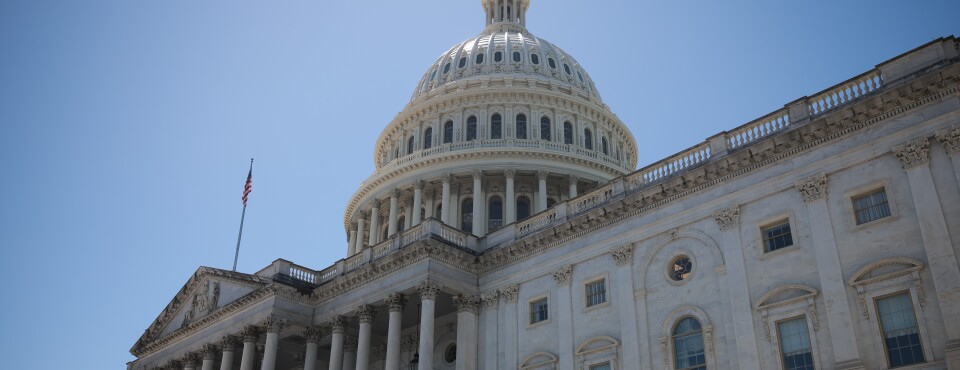
Business, some workers, and parents would see tax breaks restored and credits boosted in the House Ways and Means Committee’s tax legislation that rolled out Monday.
Largely extending the 2017 tax law, which skewed benefits toward wealthy individuals and corporations, the legislation has many provisions that companies pushed hard for. It also includes some of the provisions President Donald Trump wanted, such as reducing income tax on overtime and tips. But it also has some new taxes—on university endowments and sports owners—and it cuts billions in energy credits.
While the House version of the tax bill is a long way from becoming law—the Senate hasn’t weighed in yet—it gives a first glimpse on what parts of tax policy are on surer footing and what’s in a more precarious spot.
Here’s who won and who lost in this first version of the tax bill:
Winners
Businesses: Tuesday’s tax bill calls for keeping corporate and international tax rates steady, restoring the expiring or expired trifecta of popular business breaks and a boost in the deduction for pass-through entities. The legislation represents a hard-fought victory for companies that pushed to return them to the 2017 tax law’s original levels.
Some workers and seniors: House Republicans took the first step to deliver on Trump’s campaign promises to ease the tax burden on some workers by eliminating tax on tipped and overtime wages. The legislation also includes a break for older Americans receiving Social Security benefits.
Parents and families: Tax writers proposed a $500 boost to the current $2,000 child tax credit and made more of the credit available to low-income families. They also called for raising the estate tax exemption to $15 million, making that a permanent floor, and floating it annually after 2025 with inflation..
Multinational Corporations: House Republicans’ bill preserved the tax rates on income US companies earn abroad. It’s a win for large companies with international presences that feared lawmakers would allow the rates to increase amid a search for revenue offsets. The legislation maintained a 10.5% effective tax rate on global intangible low-taxed income, a 13.1% rate on foreign-derived intangible income, and a 10% rate on the so-called base erosion and anti-abuse tax, or BEAT. Each of these rates would have increased in 2026 without congressional intervention.
Losers
Universities: House Republicans aim to increase the tax on large private university endowments, which presents a new threat to some of the wealthiest US schools. Republicans have aggressively pursued oversight on higher education for the past several years, and their proposal creates a tiered system that imposes larger taxes based on the size of their endowments. The top tax rate would grow to 21% in for institutions with student-adjusted endowments above $2 million.
Tax-and-climate law: Former President Joe Biden’s signature legislation known as the Inflation Reduction Act takes a serious hit in the House draft, as Republicans utilize some of its provisions for savings as they enact their tax law. The proposed legislation calls for clawing back hundreds of billions of dollars in energy credits by terminating a consumer credit for electric vehicles and credits for making homes more efficient. It also calls for phasing out and restricting energy production and investment credits, while modifying and extending biofuel production credits for four years.
Sports Team Owners: People who own sports franchises will only be able to write off half of the declining value of their franchises, a direct shot at Trump’s pledge to target “special tax breaks” for a corner of the billionaire class. The tax writers called for limiting Internal Revenue Code Section 197‘s amortization rules on intangible assets of franchises like football, basketball, baseball, hockey, and soccer to “50% of the adjusted basis.”
Direct File: If the proposed tax legislation were to become law, the free electronic filing program that allowed taxpayers to directly submit their federal return with the IRS would be dead within a month. Tuesday’s proposal calls on the Treasury Department to terminate the program within 30 days of enactment, and prescribes a task force to design a public-private partnership to replace the IRS’s existing free-filing options.
Headed to Overtime
State and Local Tax Deduction: One of the stickiest topics is the question of whether to lift the $10,000 federal cap on the state and local tax deduction, which has largely affected people living in high-tax states. The legislation proposes raising the SALT deduction ceiling to $30,000, but it would limit the write-off to taxpayers earning less than $400,000. While it’s triple the current cap, it’s not clear whether the blue-state Republicans pushing for a higher cap will accept it after some voiced their rejection of that figure after last week.
-
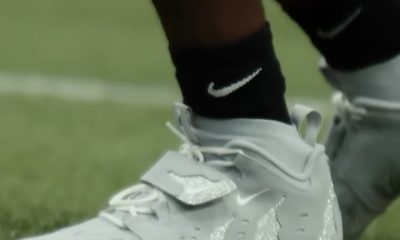
 Fashion3 weeks ago
Fashion3 weeks agoThis is poetry in motion.
-

 Rec Sports3 weeks ago
Rec Sports3 weeks agoDeputies investigating incident that caused panic at Pace youth sports complex
-

 NIL3 weeks ago
NIL3 weeks agoSave Like a Pro: NIL money isn’t free cash—taxes take a bite! Set aside part of …
-

 Sports3 weeks ago
Sports3 weeks agoHow to watch Yahoo Sports' NFL Draft Live show
-

 College Sports2 weeks ago
College Sports2 weeks agoDuke basketball's Isaiah Evans on 2025 NBA Draft early entry list
-
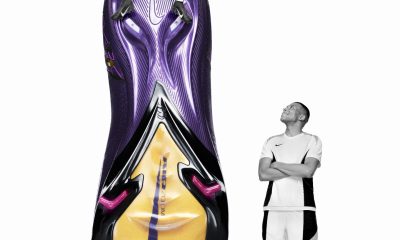
 Fashion3 weeks ago
Fashion3 weeks agohas always dreamed in Mercurial. Now his initials are on the boots. The new Kyl…
-

 Fashion1 week ago
Fashion1 week agoHow to watch Avalanche vs. Stars Game 7 FREE stream today
-

 High School Sports5 days ago
High School Sports5 days agoWeb exclusive
-

 Sports5 days ago
Sports5 days agoPrinceton University
-

 Sports4 days ago
Sports4 days ago2025 NCAA softball bracket: Women’s College World Series scores, schedule









 | MLB Highlights
| MLB Highlights














